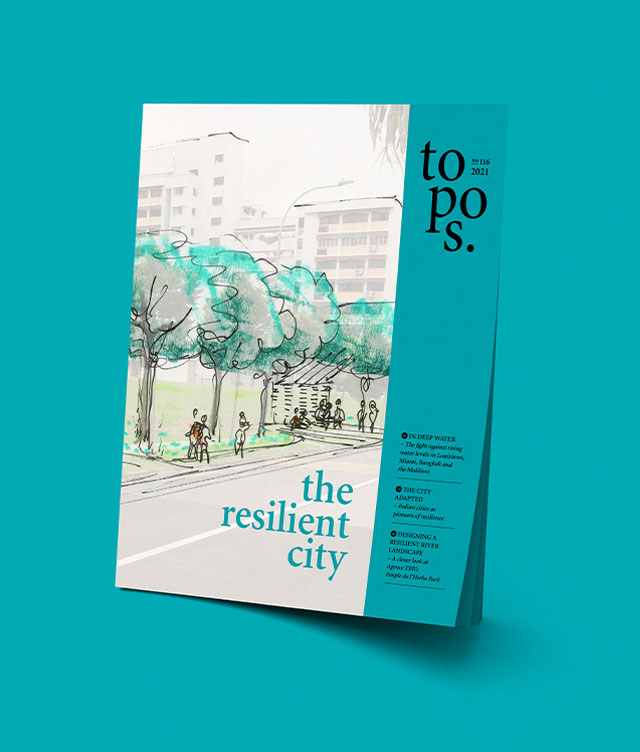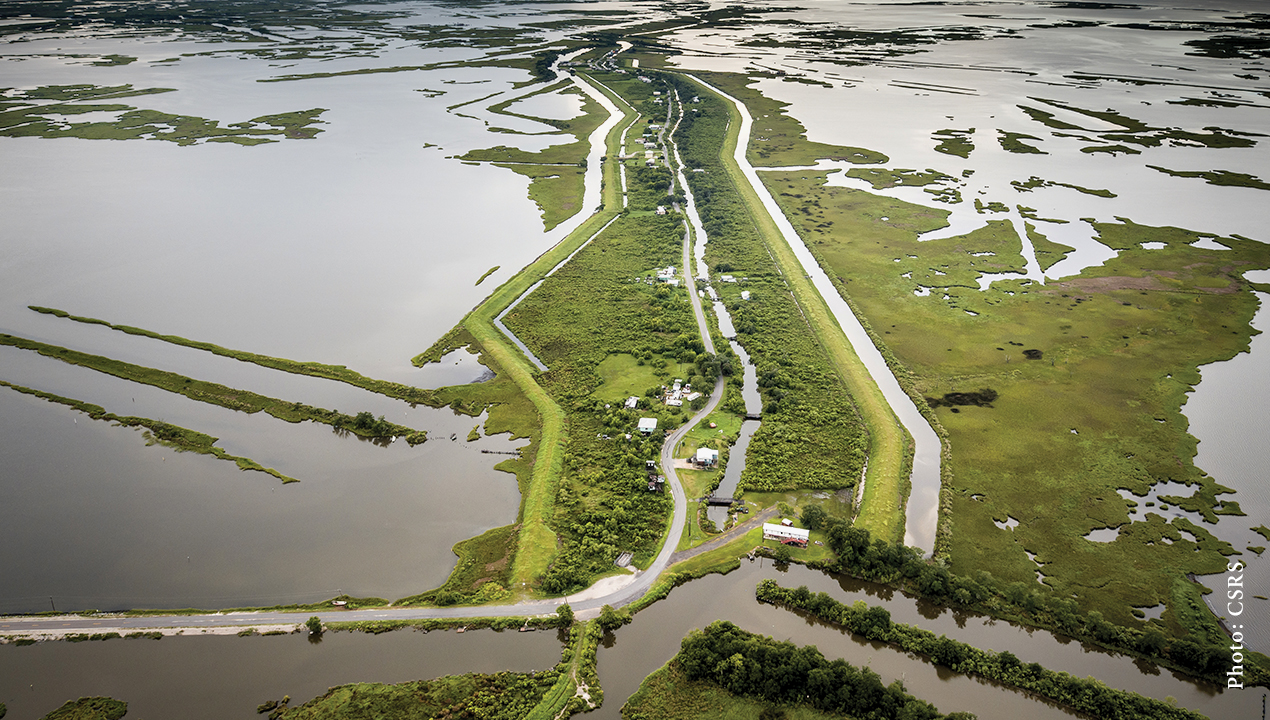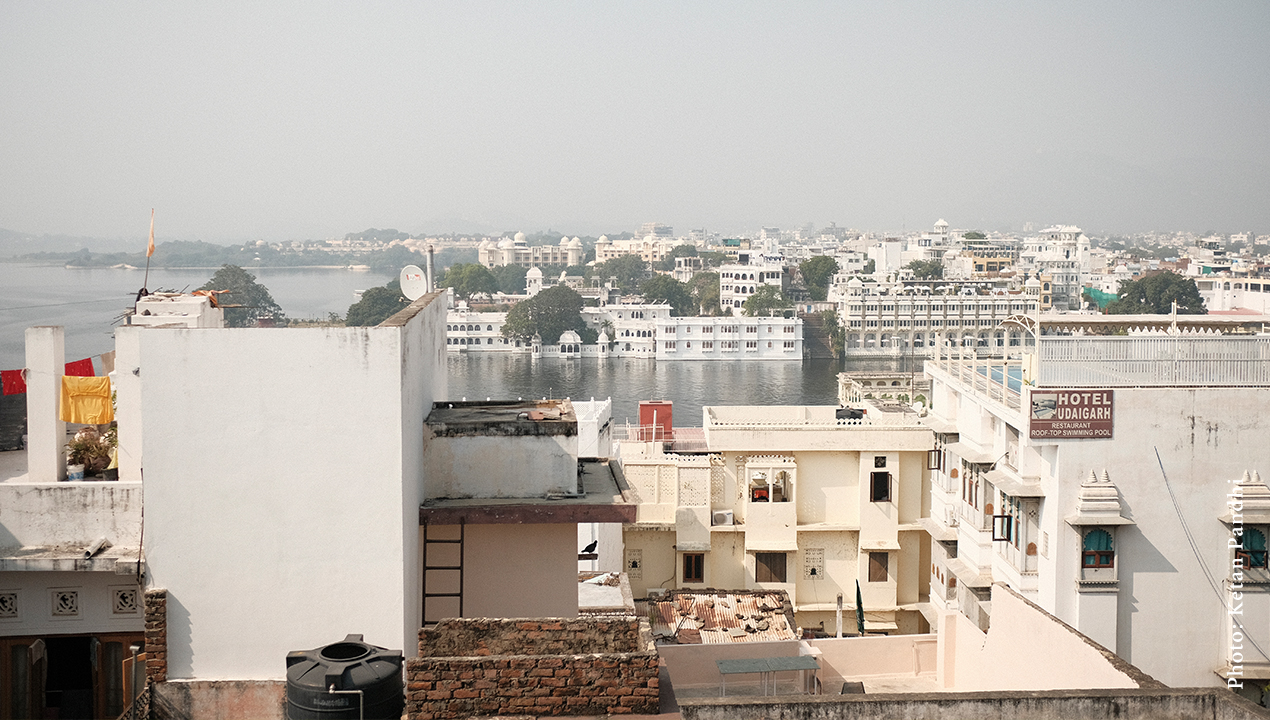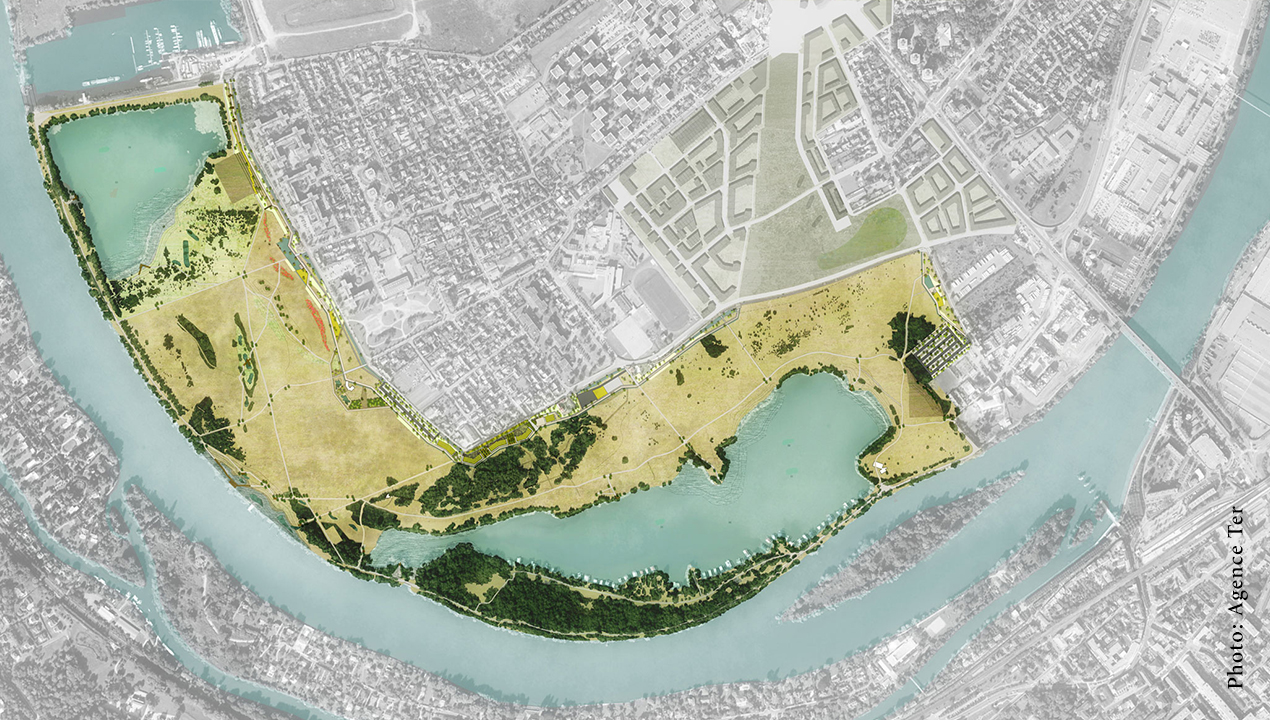

topos 116: the resilient city
Cities and metropolitan areas are the centre of life for over half of the world’s population. And although cities have suffered through shocks, crises, disasters and imponderables for as long as they've existed, they’re now becoming even more vulnerable. The question is how we – landscape architects, architects, urban designers, and urban planners – can support cities in their efforts to be more resilient and more robust? topos 116 – The Resilient City – will examine the very essence of robust, stress-resistant cities and analyse how planners and designers can work together to successfully develop them.
Get a free preview of our current issue – enjoy the read.
about topos
topos - The International Review of Landscape Architecture and Urban Design - focuses on landscape architecture as well as increasingly on architecture and urban planning. It sees itself as an interdisciplinary think tank aimed at addressing the challenges urban areas will face in future. The professional magazine strives to inspire planning practitioners, urban experts and professionals who shape the cities of tomorrow. Every issue of the periodical, that is published quarterly, is dedicated to a different topic and deals with a broad array of projects and planning work in countries all over the world.


In deep water
Cities near the sea, in delta regions and along rivers are fighting their very own battle against climate change. They are particularly affected by rising water levels. As a result of the massive pressure to act, comprehensive infrastructure projects such as artificial islands or entire resettlement programmes are being initiated – especially in Asia and the USA. They are intended to protect the population from the rising water masses. However, not all approaches are equally sustainable or socially just. The discussion in topos 116 presents four examples of controversial projects in Louisiana, Miami, Bangkok and the Maldives. Read more in the print issue or the ePaper.


The City Adapted
India is currently growing by around 15 million people per year, making it the fastest growing country in the world in terms of population. Partly as a result of massive demographic development, but also because of economic, political and climatic currents, Indian cities have adapted to urban changes over previous decades. Their high adaptability has earnt them a reputation as pioneers of resilience in sense of urban adaption,. Read more about the adapted cities of Mumbai, Puducherry and Udaipur (to name just a few) in the print issue or the ePaper.


Designing a Resilient River Landscape
With the Peuple de l’Herbe Park (2013-2016), Agence Ter developed a hybrid park in the northwest of Paris that combines the qualities of a contemporary landscape park with those of a large-scale natural park. The strength of the 113-hectare the Peuple de l’Herbe Park, however, lies in its resilience-oriented design approach, which considers potential changes from the outset, sees them as opportunities and at the same time rules out radical redesign measures.
Read more in the print issue or the ePaper.
